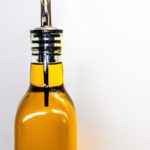New paper examining delivery methods of Asparagopsis taxiformis has compared two methods and found one to be far superior. The methods compared were oil immersion and freeze-drying.
Science
Red seaweed could cut emissions from cattle by 60 percent in Ireland
Supported by Dr Rob Kinley, an Ireland research station is exploring the use of Asparagopsis armata as a feed additive for Irish cattle. They estimate that it could help cut emissions in Ireland’s herds by up to 60%. The armata variety has been cultivated in County Galway and Ireland has a long history of hand harvesting seaweed.
The science behind FutureFeed® (Asparagopsis taxiformis)
Questions about FutureFeed®? Find out more about it, and how this variety of seaweed could help reduce emissions that are emitted by the world’s livestock populations. Find out what it is, how it can help, and where to find it around the world.
Can red seaweed slash our methane emissions?
Asparagopsis comes in two varieties, warm water (taxiformis) and cold water (armata). Researchers and companies in New Zealand are exploring the effectiveness and commercial viability of the armata variety. This article also explores some of the challenges and obstacles identified with commercialising and using the seaweed as a feed additive.



